#29
Most people who are convinced that there was no Creation and that there is no God live in the misconception that they are not religious. This sounds weird at first, but if you read through the next course you’ll understand. No one has yet been able to truly refute the existence of the Creator in world history, so atheism must also be “believed”, as no one has been able to present ready facts that no Creator exists. Therefore, atheism is a heathen religion with it’s traditions. Many celebrations of secular life have deep religious roots. Worship of nature, mythological gods, idolatry, superstition, and a mixture of these are the sect of today’s secular world. To recognize these pagan holidays you need to review some historical facts.
The pagan origins of …

C E L E B R A T I O N S
The World Book — Childcraft International says:
“For thousands of years, people all over the world have thought of a birthday as a very special day. Long ago, people believed that on a birthday a person could be helped by good spirits, or hurt by evil spirits. So, when a person had a birthday, friends and relatives gathered to protect him or her. And that’s how birthday parties began.”
“The idea of putting candles on birthday cakes goes back to ancient. The Greeks worshiped many gods and goddesses. Among them was one called Artemis.
“Artemis was the goddess of the moon. The Greeks celebrated her birthday once each month by bringing special cakes to her temple. The cakes were round like a full moon. And, because the moon glows with light, the cakes were decorated with lighted candles.”
“More and more, though, people attach certain magic to their actual date of birth. . . We may wear a ring with our birthstone in it for good luck. And when we blow out the candles on our birthday cake, we are careful to keep what we wished a secret. If we tell, of course, our wish won’t come true.
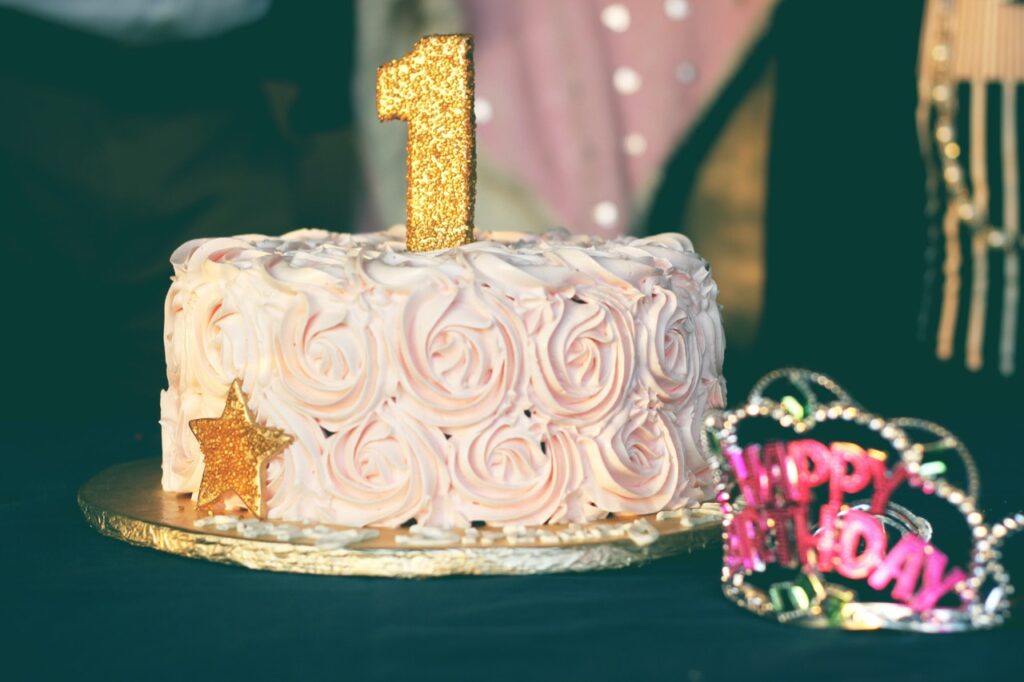
“In other words, we follow many of the old birthday beliefs. We do these things mainly for fun. But it is also possible that there is something deep inside us that wants to believe.”
Why do people say, “Happy birthday!” to each other? “For the good wishes of our friends and relatives are supposed to protect us from evil spirits.”
What about birthday thumps, bumps, pinches, and the like?
“In many parts of the world, it is a tradition to give the birthday child pinches, smacks, spanks, thumps, bumps, or punches. Even though they may hurt a little, they are said to be very lucky. . .
“The reason for birthday spanks is to spank away any evil spirits and send them scurrying far into the distance. Punches thumps, and pinches, the harder the better, are supposed to do the very same thing. . .
“Party snappers, horns, bursting balloons, firecrackers, and other noisemakers are just one more way of trying to scare off any bad-luck spirits that may be hovering about.”
“The games we play at birthday parties are often a symbol of trying to know the unknown. In this case, of course, the unknown is the future or the new year of life that lies ahead for the birthday child.
“One of the oldest birthday games is Pin-the-Tail-on-the-Donkey. A large picture of a donkey without a tail is pinned to the wall. Each child at the party is given a donkey’s tail made out of paper and a pin to stick through it. Then, one by one, the children are blindfolded. They are spun around a few times and pointed in the general direction of the donkey. The child who pins the tail the closest to where it should be on the donkey wins the prize.”
All these customs and traditions connected with the observance of birthdays have to do with guessing the future, good wishes for the future, good luck charms against evil spirits, and the like. All the birthday rituals, games, and ceremonies are a form of well-wishing toward the birthday child, which are supposed to work their magic in the year ahead.
The ceremonies and games involve warding off evil spirits and protecting the birthday child from evil. These are pagan customs – vain and foolish rituals – nothing but useless pagan superstition!
Should God’s people have anything to do with ceremonies that trace back ancient pagan societies and pagan times, involving pagan practices? Should a true Christian indulge himself or his or her children in pagan birthday parties, just because they seem so attractive, fun, and “innocuous”?
The Word of God thunders, “What fellowship hath righteousness with unrighteousness? and what communion hath light with darkness?
Let’s look at this custom objectively. Why should we subject our children to it? All the comparisons, who gets the best present, competition, and strife that inevitably follows? Let’s get honest and face it. In God’s sight, birthday parties and celebrations are not clean, honest, honorable, fun things to do. They are unclean things – and lead a child in the wrong direction. They turn people away from the truths of YAHUAH and idolize the self.
Source: The World Book — Childcraft International
Halloween and the Forces of Darkness
By Pastor David J. Meyer (www.therefinersfire.org)
Where did it all come from? October 31st is a day of ghosts, witches, goblins, and grotesque creatures. It is also a day of orange and black, of candles and jack-o-lanterns. Costume parties and strange customs occupy the minds of western civilization, and all of this seems to be intensifying every year. Children wearing every kind of costume imaginable, and some unimaginable, have been going door to door for years at the end of October saying “trick or treat” and collecting bags full of treats. In recent years, many people have been decorating their yards as cemeteries and making their houses look spooky. Even churches have Halloween parties and set up “haunted houses” as fundraising projects. Where did it all come from, and what does it all mean? Most people would say it is all harmless fun. Some would venture to say, “If there is any witchcraft in it, it is white witchcraft.” To truly answer both of the questions where did it come from and what does it mean, we must go clear back to the origin of it all.
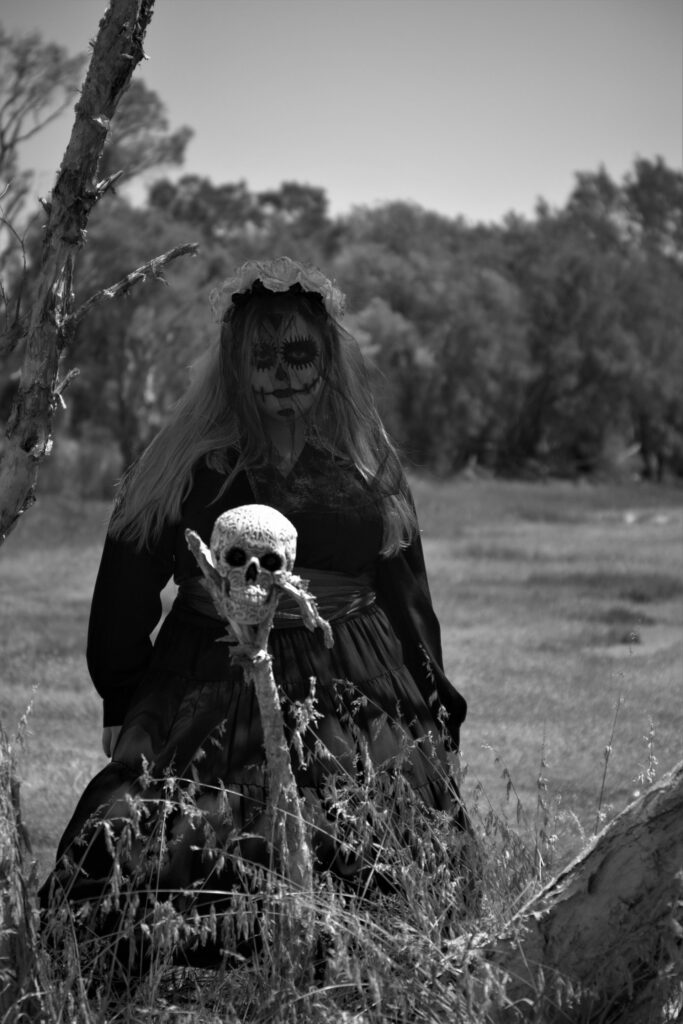
Halloween has its origin in the British Isles about 1300 years ago. In those days, many men and women practiced a so-called “nature religion” known as Wicca. (The word “Wicca” means “wise ones.” The word “witch” is derived from “Wicca.”) The witches worked their spells and magic as individuals or sometimes in groups of 13 known as Covens. Sometimes the witches and wizards worked as a triumvirate or power of three. The female Wiccan was known as a witch, and the male Wiccan was known as a wizard. The word “warlock” was not used by witches to identify themselves. It is a Scotch-Gaelic word that means “traitor.” Satanists use the word “warlock.”
The Wiccans were worshippers of the “Earth Mother”, the sun, the moon, and stars. They draw a magic circle with a six-pointed star in it called a “hexagram”, from which we get the word “hex.” The coven of 13 stands “sky-clad” or naked in the hexagram and works spells by chanting and doing rituals such as “drawing down the moon.” The full moon is sacred to witches, especially if it is on a Friday. It is considered to be even greater if Friday is the 13th day of the month.
Eight times each year, the witches celebrated a sabat and the ritual work and spell casting was always done on the eve of the sabat. The sabats are Imbolc on February 2nd, the spring equinox on March 22nd, Beltaine on May 1st, the summer solstice on June 22nd, Lugnahsaid on July 31st, the fall equinox on September 22nd, Samhain on October 31st, and the winter solstice on December 22nd, which is also known as Yule.
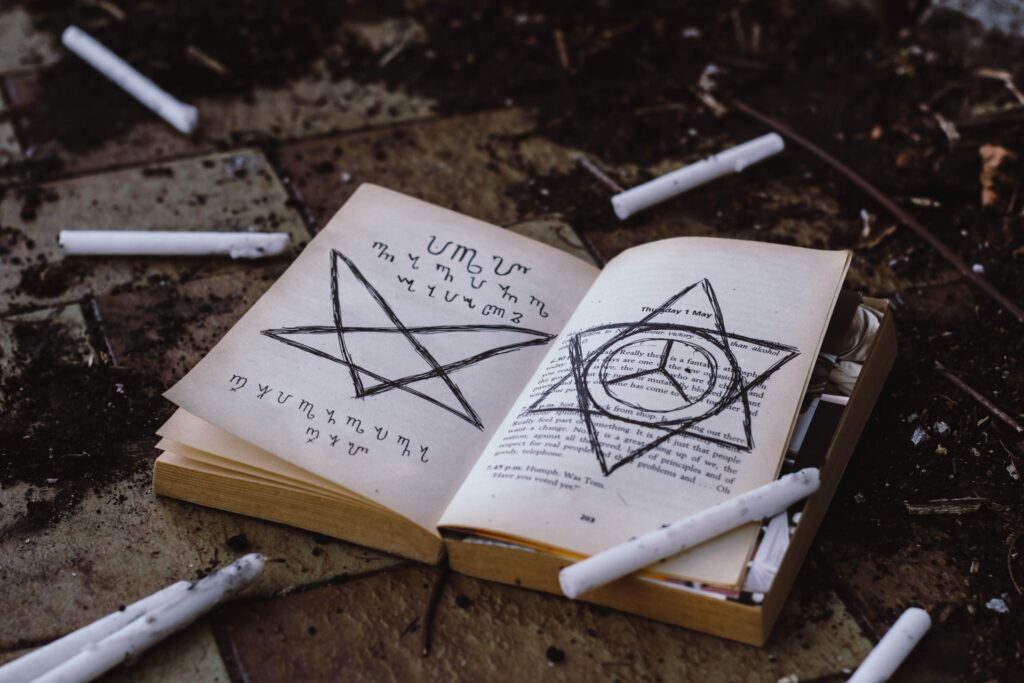
Witches have special ways of celebrating each sabat, and even though they do not believe in Satan, it is Satan who gives them the experiences they have and deceives them into thinking it is the forces of nature they are tapping into. Halloween is the most important of the eight sabats in witchcraft and is known to the witches by the Scotch-Gaelic word “Samhain”, which is pronounced “SOW-EEN.” It is believed that on that night, the barrier between this world and the next, known as the astral plane, becomes very thin. The witches believe that this allows spirits of departed ones to travel freely back and forth between the earth and the spirit realm. Thus, Halloween is the highest day in Wiccan witchcraft. On that night for many centuries, witches would work their magic and then have wild parties all through the darkness of that night. They would play games, such as bobbing for apples, because witches regard the apple as sacred. The witches would also tell stories from their diaries of spells known as their “book of shadows.” These ghost stories would start when the hosting High Priest or Priestess would say, “A witches’ tale and a cup of ale for the host of our guests unseen.”

If the house or village gave a girl as a “treat”, the Druids put a pumpkin with a face carved in it in front of the door or gate of that place. Inside the pumpkin was a candle made of human tallow to keep evil spirits away. Thus, the Jack-O-Lantern was and is a sign that you have cooperated with Satan.
In those early days in England, there was another kind of witchcraft known as Druidism. The Druids were called “men of the oaks” and were a strange clan of men who dressed in white robes. The Druids worshipped Cernnunos, the “horned hunter of the night.” Halloween was sacred to the Druids because their sun god receded to the underworld on October 31st, which is why darkness increased and light decreased according to their reckoning.
As darkness set in on October 31st, the clan of Druids would put on their white robes and hoods. They would carry sickles and Celtic crosses as they began a torchlight procession. At the beginning of the procession, a male slave was killed and dragged by a rope fastened to his left ankle. The Druids would walk until they came to a house or a village where they shouted the equivalent of “trick or treat.” The treat was a slave girl or any female to be given to the Druids. If the people refused a girl as a “treat”, blood was taken from the dead slave and used to draw a hexagram or six-pointed star on the door or wall of the village. Spirits of the “horned hunter of the night” were invoked by the Druids to kill someone in that house or village by fear that night.
The treats or female victims were taken to Stonehenge where they were raped and killed and then sacrificed on the sacred bonefire until only glowing embers were left. The “bonefire” is the origin of the modern-day bonfire. As a matter of luck for winter survival, all villagers were expected to use the glowing embers of the bonefire to light their hearths.
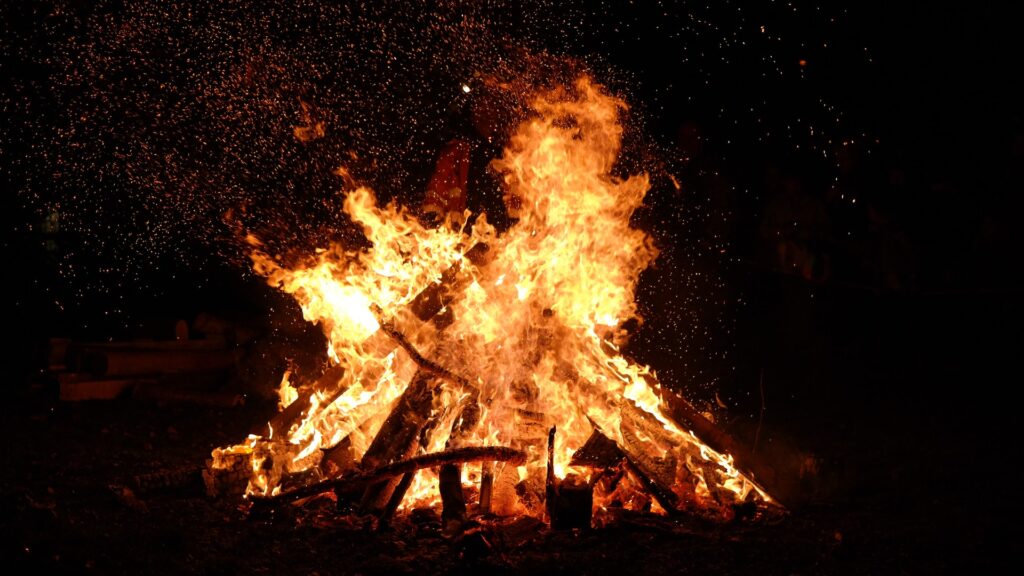
Female victims were raped and killed and then sacrificed on the bonefire.
Satan has people in our modern era mimicking the witches and Druids of old. All of this is cursed by ELOHIYM. We live in a time when witchcraft is being revived. Movies are filled with witchcraft and numerous television programs such as “Charmed” are teaching witchcraft to millions. The Harry Potter books are likewise furthering the cause of Satan! Halloween is no joke and is not harmless fun! This evil holiday has no part in the life of a Christian. The Roman Catholic Church borrowed Halloween from the witches, which shows how blind they are.
May ElOHIYM help you as you read this tract to avoid Halloween and warn others that it is strictly the invention of Satan and can never be anything but the evil of the first magnitude!
Related Bible Verses:
Pagan origins of Christmas
Source: (www.therefinersfire.org)
Christmas is not mentioned in the Bible; nor is the command to celebrate the birth of Messiah. That aside, there are some fundamental truths about this holiday that highlight the difference between festivals ordained by YHWH, and those concocted by man…Not to mention, YHWH warned us against pagan customs!

- Yeshua (Jesus) was not born in December. If we examine the Biblical facts, we can determine that He was born in the September-October timeframe.
- YHWH never said to honor His Son’s birthday.
- Except for those Christians who do think of “Jesus” on Christmas, it has, for the most part, become a commercial “holiday” to the point where Yeshua Ha’Mashiyach (whom Christians call Jesus Christ) is never mentioned in the secular media, and our efforts are mainly concentrated on gift-giving and money spending. Where in the Scriptures can you find that we are to give presents to each other on a “holy day”?
Some Christians say that Christmas has been instrumental in “getting the Word out” because it witnesses to the secular world. While this might be true to a certain extent, this holiday is also based on several lies:
- “Santa Claus” is not real. Exactly what does “Santa” have to do with the birth of Jesus? Lying is lying, no matter how we package it, so why would God be pleased with a deliberate yearly perpetuation of lies?
- Except for some Christians, Christmas is a holiday that doesn’t include Yeshua at all – which automatically makes it a lie. Why do unbelievers bother celebrating Christmas? Without Messiah, what is the purpose? Yet practically everyone in the Western World “celebrates” Christmas. Christmas to the unbeliever is a holiday to throw parties, get together with family and friends, and exchange presents. Go to a search engine and search on something to the effect of, “What is Christmas really about?” and you will find sites that talk about everything from what people want for Christmas, to how the warm weather detracts from the “feel” of the holidays. You’ll have to search long and hard to find the mention of Christ…..
We’ve not only decided to force a December birthday on our Savior, but we also shove paganism down His throat via “Christmas trees”. Realizing there is a symbology and tradition behind Christmas trees, does not detract from the fact that bringing trees into the home and decorating them was a pagan custom, practiced in various parts of the world. For instance:
The Romans celebrated the winter solstice with a fest called Saturnalia in honor of Saturnus, the god of agriculture. They decorated their houses with greens and lights and exchanged gifts. They gave coins for prosperity, pastries for happiness, and lamps to light one’s journey through life.

Centuries ago in Great Britain, woods priests called Druids used evergreens during mysterious winter solstice rituals. The Druids used holly and mistletoe as symbols of eternal life, and place evergreen branches over doors to keep away evil spirits.
Late in the Middle Ages, Germans and Scandinavians placed evergreen trees inside their homes or just outside their doors to show their hope in the forthcoming spring. Our modern Christmas tree evolved from these early traditions.
The Encyclopaedia Britannica reports that “The traditional customs connected with Christmas have developed from several sources as a result of the coincidence of the celebration of the birth of Christ with the pagan agricultural and solar observations at midwinter. In the Roman world, the Saturnalia (December 17) was a time of merrymaking and the exchange of gifts. December 25 was also regarded as the birth date of the Iranian mystery god Mithra, the Sun of Righteousness.”
Colliers Encyclopedia agrees. Quote: “After the triumph of Constantine, the church at Rome assigned December 25 as the date for the celebration of the feast, possibly about A.D. 320 or 353. By the end of the fourth century, the whole Christian world was celebrating Christmas on that day, except for the Eastern churches, where it was celebrated on January 6. The choice of December 25 was probably influenced by the fact that on this day the Romans celebrated the Mithraic feast of the Sun-god (Natalis Solis Invicti), and that the Saturnalia also came at this time.”
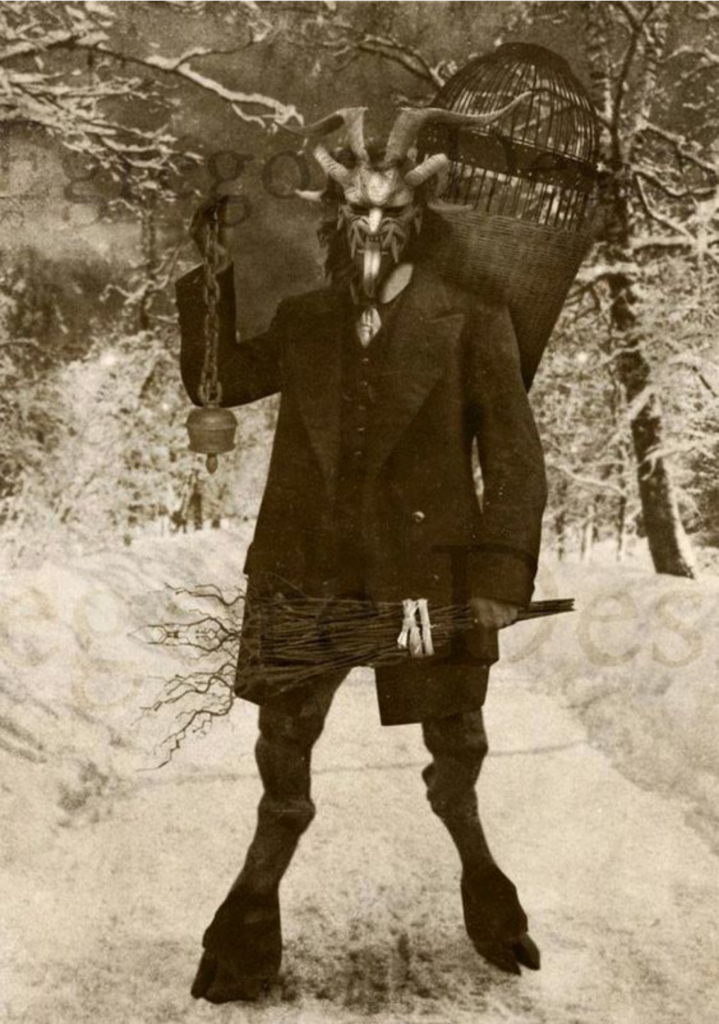
First-century believers, taught personally by Christ, did not celebrate His birthday. Second-century theologians condemned the thought. Only after severe persecution, destruction, and inaccessibility of biblical scripture and the blending of pagan doctrine with the worship of God was the Mithraic celebration of December 25th proclaimed to be “Christian” in nature.
Sun worshipers since the time of Babel recognized this time of year in honor of their gods.
The Catholic Encyclopedia tells us: “Christmas was not among the earliest festivals of the Church… in the Scriptures, sinners alone, not saints, celebrate their birthday…. In England, Christmas was forbidden by Act of Parliament in 1644; the day was to be a fast and a market day; shops were compelled to be open; plum puddings and mince pies condemned as heathen. The conservatives resisted; at Canterbury blood was shed; but after the Restoration Dissenters continued to call Yuletide ‘Fooltide’” (vol. 3, pp. 724, 728)
Christmas is pagan to the core
Source: www.hope-of-israel.org
Look high and low throughout the pages of the Bible, and you will find not one word of “Christmas” being celebrated by any of YAHUAH’s people! Yet on the other hand the pagan, heathen world observed this day for thousands of years before the Messiah was even born!
We read in Werner Keller’s book The Bible as History the following admission:
“December 25 is referred to in documents as Christmas Day in were A.D. 324 for the first time. Under the Roman emperor Justinian [A.D. 527-565] it was recognized as an official holiday. An old Roman festival played a major part in the choice of this particular day. December 25 in ancient Rome was the ‘Dies Natali Invictus,’ ‘the birthday of the unconquered,’ the day of the winter solstice and at the same time, in Rome, the last day of the Saturnalia, which had long since degenerated into a week of unbridled carnival…” (p. 331).
Who was born on December 25?
In the book History of Rome, by Michael Grant, we read this startling revelation:
“…This was the cult of the Sun, which was revered by millions of the inhabitants of the Roman Empire, and its religion for a time even became the state worship… In Rome, the divinity of the Sun came very early on… Before long, the emperor Aurelian established a massive temple of the Unconquerable Sun as the central and focal point of the entire religious system of the state (274). The birthday of the god was to be on December 25, and this, transformed into Christmas day, was one of the heritages that Christianity owed to his cult” (p. 391- 392).
When Constantine became Emperor of Rome, he nominally at least became a “Christian.” As a sagacious politician, he sought to reconcile and blend and mesh pagan practices with “Christian” beliefs, to merge paganism with the Roman church.
Constantine promulgated the “Edict of Toleration” in A.D. 313. (Jesse Lyman Hurlbut, The Story of the Christian Church, p. 74).
Will Durant, renowned historian, in his massive work The Story of Civilization, wrote:
“Christianity did not destroy paganism; it adopted it. The Greek mind, dying, came to a transmigrated life in the theology and liturgy of the Church… the Greek mysteries passed down into the impressive mystery of the Mass. Other PAGAN cultures contributed to the syncretic result. From Egypt came the idea of a divine trinity… from Egypt the adoration of the Mother and Child… From Phrygia came the worship of the Great Mother… The Mithraic ritual so closely resembled the eucharistic sacrifice of the Mass that Christian fathers charged the Devil with inventing these similarities to mislead frail minds. Christianity was the last great creation of the ancient PAGAN world” (p. 595).”
The Seduction of the Church
Admits the Worldbook Encyclopedia, “all of the popular customs and traditions surrounding Christmas were celebrated at pagan mid-winter festivals thousands of years before the Messiah was born. Admits this same encyclopedia, “The custom of burning the Yule log began with the ancient Scandinavians, who once a year burned a huge log in honor of their god thor. After the Scandinavians became Christians [sic], they made the Yule log an important part of their Christmas ceremonies.”
The Christmas Tree
Coffin in The Book of Christmas Folklore tells us:
“Most people have heard that the Christmas tree originates in the Tannenbaum and is some sort of vestige of Teutonic vegetation worship. This is partially true. However, the custom of using pine and other evergreens ceremonially was well established at the ROMAN SATURNALIA, even earlier in Egypt” (p. 209).
Writes Alexander Hislop in The Two Babylons,
“The Christmas tree, now so common among us, was equally common in Pagan Rome and Pagan Egypt. In Egypt that tree was the palm tree; in Rome, it was the fir; the palm-tree denoting the Pagan Messiah, as Baal-Tamar, the fir referring to him as Baal-Berith. The mother of Adonis, the Sun-God and great mediatorial divinity, was mystically said to have been changed into a tree, and when in that state to have brought forth her divine son. If the mother was a tree, the son must have been recognized as the ‘Man the branch.’ And this entirely accounts for the putting of the Yule Log into the fire on Christmas Eve, and the appearance of the Christmas tree the next morning” (page 97).

“The Christmas tree… recapitulates the idea of tree worship… gilded nuts and balls symbolizing the sun… all the festivities of the [heathen] winter solstice have been absorbed into Christmas Day… the use of holly and mistletoe to the Druidic ceremonies; the Christmas tree to the honors paid to Odin’s sacred fir…” (p. 236).
Santa Claus
Even Santa Claus has a not-so-benign origin! This fat and jolly elf can be traced back to another ancient pagan Norse legend! Admits the Worldbook Encyclopedia,
“Some of Santa Claus’s characteristics date back many centuries. For example, the belief that Santa enters the house through the chimney developed from an old Norse legend. The Norse believed that the goddess Hertha appeared in the fireplace and brought good luck to the home.”
Although most people assume that the original “Santa Claus” was a bishop by the name of St. Nicholas of Asia Minor of the fourth century, this is not true. Although some of this bishop’s deeds later came to be associated with “St. Nick,” the original “Nicholas” was once again Nimrod, the “mighty one against the Lord.” The word “Nicholas” means “mighty one, powerful.” Traditions of a “god” who gave gifts under an evergreen tree antecede the Asian Minor bishop by thousands of years! Among the Scandinavians, it was the god Odin or Woden who left special gifts during the Yuletide season under the evergreen tree, his sacred tree!
This mythological figure, also, is pagan to the core!
“Wodan/Odin: Dragging his dark and devilish slave Eckhart along on a chain, he rides through the stormy skies. He leads the Wild Hunt, eluding, and finally subjugating, the powers of evil. He also wears a broad-brimmed hat, a wide mantel, holds his spear, and rides through the skies…” (p. 111).
The True Origin of Christmas
What is the actual origin of the celebration of December 25? A careful look at the word “Christmas” itself ought to tell us something. Notice! It is a mixture. Though it includes the name of Christ, it also mentions the “mass.” Where did the “mass” — with its rituals, elaborate ceremony, pagan prayers for the dead, transubstantiation rites, etc. — come from?
The “sun god” in ancient Egypt was Osiris. The round disk of the Egyptian “mass” symbolized the sun, and was an offering symbolizing the sun-god. He was considered the life and nourishment of the souls of men!
“That Christmas was originally a Pagan festival, is beyond all doubt. The time of the year, and the ceremonies with which it is still celebrated, prove its origin. In Egypt, the son of Isis, the Egyptian title for the queen of heaven, was born at this very time, ‘about the time of the winter solstice.’ The very name by which Christmas is popularly known among ourselves — Yule-day — proves at once its Pagan and Babylonian origin. ‘Yule’ is the Chaldee name for an ‘infant’ or ‘little child;’ and as the 25th of December was called by our Pagan Anglo- Saxon ancestors, ‘Yule-day,’ or the “Child’s day,’ and the night that preceded it, ‘Mother-night,’ long before they came in contact with Christianity, that sufficiently proves its real character” (pp. 93-94).
The pagan customs of Christmas had nothing remotely to do with the Messiah, or the Word of YAHUAH, the Scriptures. Yet, somehow, this ancient pagan festival wormed its way into the established “Christian” Church and became its most prominent holiday of the year! What a monstrous mystery!
Should Christians today celebrate this ancient festival?
Many today may think it is all right, but the opinions of men are not our standard or authority. What does the Word of YAHUAH itself say about this matter? It is a very serious question. Is it all right in the sight of ELOHIYM for men to take pagan customs and traditions, and to observe them, calling them “Christian”? Is it all right to merge and combine idolatrous practices with the truth of YAHUAH?
YAHUAH does not change:
“19 God is not a man, that he should lie; neither the son of man, that he should repent: hath he said, and shall he not do it? or hath he spoken, and shall he not make it good?”
Numbers 23
“17 Every good gift and every perfect gift is from above, and cometh down from the Father of lights, with whom is no variableness, neither shadow of turning.”
James 1
“7 The works of his hands are verity and judgment; all his commandments are sure. 8 They stand fast for ever and ever, and are done in truth and uprightness.”
Psalm 111
“25 Of old hast thou laid the foundation of the earth: and the heavens are the work of thy hands. 26 They shall perish, but thou shalt endure: yea, all of them shall wax old like a garment; as a vesture shalt thou change them, and they shall be changed: 27 But thou art the same, and thy years shall have no end.”
Psalm 102
“3 After the doings of the land of Egypt, wherein ye dwelt, shall ye not do: and after the doings of the land of Canaan, whither I bring you, shall ye not do: neither shall ye walk in their ordinances. 4 Ye shall do my judgments, and keep mine ordinances, to walk therein: I am the Lord your God. 5 Ye shall therefore keep my statutes, and my judgments: which if a man do, he shall live in them: I am the Lord.”
Leviticus 18
Truly, the whole world has been deceived by Satan the devil, and his clever masquerades and machinations (Revelation 12:9). Christmas is pagan. The question is: What are you going to do about it?
source: www.hope-of-israel.org
The Truth about new year’s celebration
by William H. Ellis [The Plain Truth – December, 1964] Source: www.truthontheweb.org
MOST people carelessly assume that celebrating New Year’s Eve is a Christian custom. But did the practice of “waiting the old year out” really come from the Bible? Is January 1 the true beginning of a new year? Who has the authority to determine when a new year begins?
An Ancient Pagan Custom
New Year’s is one of the oldest and most universal of all pagan traditions! The custom of celebrating it has remained essentially unchanged for 4,000 years. The celebration of New Year’s began in ancient Babylonia in Mesopotamia. It was a pagan custom of ancient sun-worship 2000 BC. The celebration of New Year’s is never once commanded in the Bible.
A Pagan Roman Feast
The New Year’s festivities that had originated in Babylon found their way to Greece and finally to Rome. The Romans called it “Saturnalia” — in honor of Saturn. Among them, it was extremely popular — a time of revelings, drinking bouts, orgies — finally ending in human sacrifice!

“The first day of the Saturnalia shifted during the lifetime of Rome … it began around the middle of December … and continued until January first. In its midst was December twenty-fifth, the day, as the Romans calculated, when the sun was at its lowest ebb ….” (E. W. Count’s “4000 Years of Christmas”, page 28.)
It was Julius Caesar, Emperor of pagan Rome, who instituted the New Year’s festival on January first. In 46 B. C., Caesar adopted the Julian calendar. He transferred to the first of January all of the licentious customs surrounding the Roman Saturnalia!
Accepted by “Church Fathers”
But how did such a thoroughly pagan day ever insinuate itself into our modern “Christian” calendar? Read the answer from church history — about 375 A.D. This is the period Emperor Constantine imposed “Christianity” on the Roman world.
“The Church Fathers discovered to their alarm that they were also facing an invasion of pagan customs. The habit of Saturnalia was too strong to be left behind. At first, the Church forbade it, but in vain” (page 31).
Rather than resist the influence of pagan customs, the Catholic Church fathers compromised!
“The Church finally succeeded in taking the merriment, the greenery, the lights, and the gifts from Saturn and giving them to the Babe of Bethlehem … The pagan Romans became Christians — but the Saturnalia remained!” (E.W. Count, page 31.)
Finally, Pope Gregory re-instituted the ancient pagan Roman date of January first. He imposed it on the whole Western world in 1582 when his Gregorian calendar “reforms” were accepted. All Roman Catholic countries accepted this change at once! Sweden, Germany, Denmark, and England, the strongholds of Druid customs, finally acquiesced to Rome in the 1700s!
When Does ELohiym Begin the new year?
ELOHIYM’s sacred calendar year begins in the spring — not in the middle of a dead winter! Notice Exodus 12:1-2, “And the Eternal spake unto Moses and Aaron in the land of Egypt, saying, This month shall be unto you the beginning of months: it shall be the first month of the year to you.“
It was in the month of Abib or Nisan that Israel came out of Egyptian captivity under Moses (Ex. 34:18). The Hebrew month Abib overlaps the months of March-April on the pagan Roman calendar in use today.
by William H. Ellis [The Plain Truth – December, 1964 – Ambassador Press] This particular article is from the Plain Truth Magazine 1964 and is presented under fair use. ©2010 Truth On The Web Ministries: All the articles originated by Kenneth Hoeck or Brian Hoeck may be freely distributed or mirrored as long as presented in their entirety (including this statement), attributed to Truth on The Web, and that proper author credit is given. www.truthontheweb.org
The Truth on easter
source: www.truthontheweb.org
“Each year in the springtime, the mainstream Christian world celebrates a holiday called “Easter.” Many assume that this holiday originated with the resurrection of Jesus Christ but the information provided here will demonstrate that this spring tradition of men is actually or older and far less ‘holy’ than one would imagine. The following quotes have been derived from several valid and even scholarly sources. The purpose is to unveil the truth about the origins of this spring ‘Christianized’ pagan holiday. When you have read these though and discerned the truth we hope that you will remain convicted and follow His lead — away from non-biblical holidays. The crux of the matter is not so much the hidden meanings of the symbols and story but one of how your heart is before your Creator.
Do you decide what days to observe or does YAHUAH? The bible tells us that a little leaven leavens the whole lump and with that seasonally correct truth in mind … Come, let us reason together.”
“Before Christ, the people living in northern Europe had a goddess called Eostre, the goddess of the spring. Every year, in spring the people had a festival for her. The name of our spring festival, Easter, comes from the name Eostre.” (The Easter Book, Milan: Macdonald Educational, 1980, p.5)
“The English word Easter is derived from the names ‘Eostre’ — ‘Eastre’ – ‘Astarte’ or ‘Ashtaroth’. Astarte was introduced into the British Isles by the Druids and is just another name for Beltis or Ishtar of the Chaldeans and Babylonians. The book of Judges records that ‘the children of Israel did evil …in the sight of the LORD and served Baalim, and Ashtaroth, …and forsook the LORD, and served not Him.’ Easter is just another name for Ashteroth ‘The Queen of Heaven.’ Easter was not considered a ‘Christian’ festival until the fourth century. Early Christians celebrated Passover on the 14th day of the first month and a study of the dates on which Easter is celebrated will reveal that the celebration of Easter is not observed under the prescribed time for the observance of Passover. After much debate, the Nicaean council of 325 A.D. decreed that ‘Easter’ should be celebrated on the first Sunday after the vernal equinox. Why was so much debate necessary if ‘Easter’ was a tradition passed down from the Apostles? The answer is that it was not an Apostolic institution, but, an invention of man! They had to make up some rules. History records that spring festivals in honor of the pagan fertility goddesses and the events associated with them were celebrated at the same time as ‘Easter’. In the year 399 A.D. the Theodosian Code attempted to remove the pagan connotation from those events and banned their observance. The pagan festival of Easter originated as the worship of the sun goddess, the Babylonian Queen of Heaven who was later worshipped under many names including Ishtar, Cybele, Idaea Mater (the Great Mother), or Astarte for whom the celebration of Easter is named. Easter is not another name for the Feast of Passover and is not celebrated at the Biblically prescribed time for Passover. This pagan festival was supposedly ‘Christianized’ several hundred years after Christ.” (Richard Rives, Too Long in the Sun)

Ishtar is an ancient Mesopotamian goddess associated with love, beauty, sex, war, justice, and political power. She was originally worshiped in Sumer under the name “Inanna”, and was later worshiped by the Babylonians, and Assyrians under the name Ishtar. Rabbits are the symbol of rebirth.
“In primitive agricultural societies natural phenomena, such as rainfall, the fecundity of the earth, and the regeneration of nature were frequently personified. One of the most important pagan myths was the search of the earth goddess for her lost (or dead) child or lover (e.g., Isis and Osiris, Ishtar and Tammuz, Demeter and Persephone). This myth, symbolizing the birth, death, and reappearance of vegetation, when acted out in a sacred drama, was the fertility rite par excellence.” (The Columbia Encyclopedia, Sixth Edition. 2001)
“32 And ye shall know the truth, and the truth shall make you free.”
John 8

